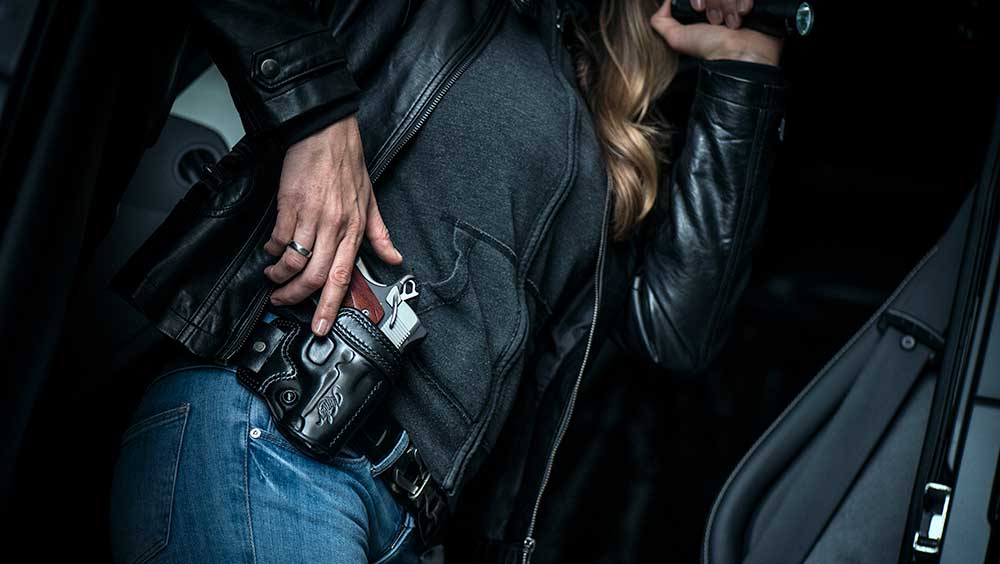
Carrying a defensive firearm means making changes in our lifestyle. Some of them are easy to make, and some require more thought and effort. Here are seven things to consider once you’ve decided to become your own first responder and carry concealed on a regular basis.
- Have an appropriate level of situational awareness for your surroundings. The Cooper Color Code is a fantastic tool to help make this happen. The easiest way I’ve found to describe this idea is “Pay attention to what you’re paying attention to.” As I write this, I’m sitting at home in my easy chair, writing on my laptop. Am I expecting something bad to happen? Oh heck no. I’m quite relaxed, actually. Do I have that same level of relaxation and bliss when I’m driving on a busy street in the city? No, I pay much more attention to what’s going on then. Situational awareness means applying those same levels of awareness when you drive to when you’re not driving.
- Pre-visualize what could go wrong. Pre-visualization means, in essence, that we accept the fact that violent encounters can happen, and we pre-plan our responses. It’s not being paranoid, it’s having at least one response ready to go based on what’s around you. To go back to the driving metaphor for a bit, pre-visualization means checking your mirrors to see if you can make a quick lane change if something bad happens in front of you. That’s not being paranoid, that’s being prudent. Also, pre-visualize how the rules of gun safety apply to your life, and follow them every moment of every waking day.
- Commit to having a gun with you wherever and whenever possible. This is absolutely crucial, as everything else you’ve done to defend against an armed attacker is moot if you don’t have an appropriate response ready to go. In fact, a Georgetown University study showed that 81.9 percent of the time, just showing that you were armed ended an armed violent armed encounter. Those are good odds, but you only get to play those odds if you have a gun ready to go at a moment’s notice.
- Figure out how much effort you’re willing to make in order to have a gun with you as often as possible. For a lot of my friends, this question is moot. They “dress around the gun” and carry duty-sized pistols festooned with lights, red dots and all manner of gadgets, and choose their wardrobe around that fact. However, not everyone is willing to do that, at least at first. Maybe pocket carry is right for you, or some form of off-body carry. Whatever you decide, make sure you can access your gun quickly if needed, and always be on the lookout for a better method of carry.
- Adjust your attitude. John Farnam is a legend in the firearms training world, and he came up with Farnam’s Rules for avoiding bad situations: Avoid going to stupid places to do stupid things at stupid times with stupid people. There are restaurants near me that have some amazing food, but they are located in neighborhoods where I wouldn’t go to on a Saturday night with anything less than a squad of Marines as a company. An easy rule of thumb is, if you're going someplace where you think you might need a gun, don't go there.
- Expand your options. Chuck Haggard said it best: Carrying pepper spray gives you an option between harsh words and a gun. A flashlight lets you show the bad guys that you know they might be out there and lets you light up a potential threat before it becomes a real threat. The fact is, a violent criminal encounter may very well require something other than a ballistic answer, so have one ready to go.
- Relax and have fun. My friend Melody Lauer says, “Don’t let your desire to protect your life stop you from having a life worth living,” and I agree 100% with that idea. Shooting guns is fun, so go to the range and practice. Mastering a new skill is fun, so take a shooting class. Relax in the knowledge that you’ve started on a journey called “effective concealed carry,” and the end destination is a peaceful life for you and your family, no matter what may happen.




































